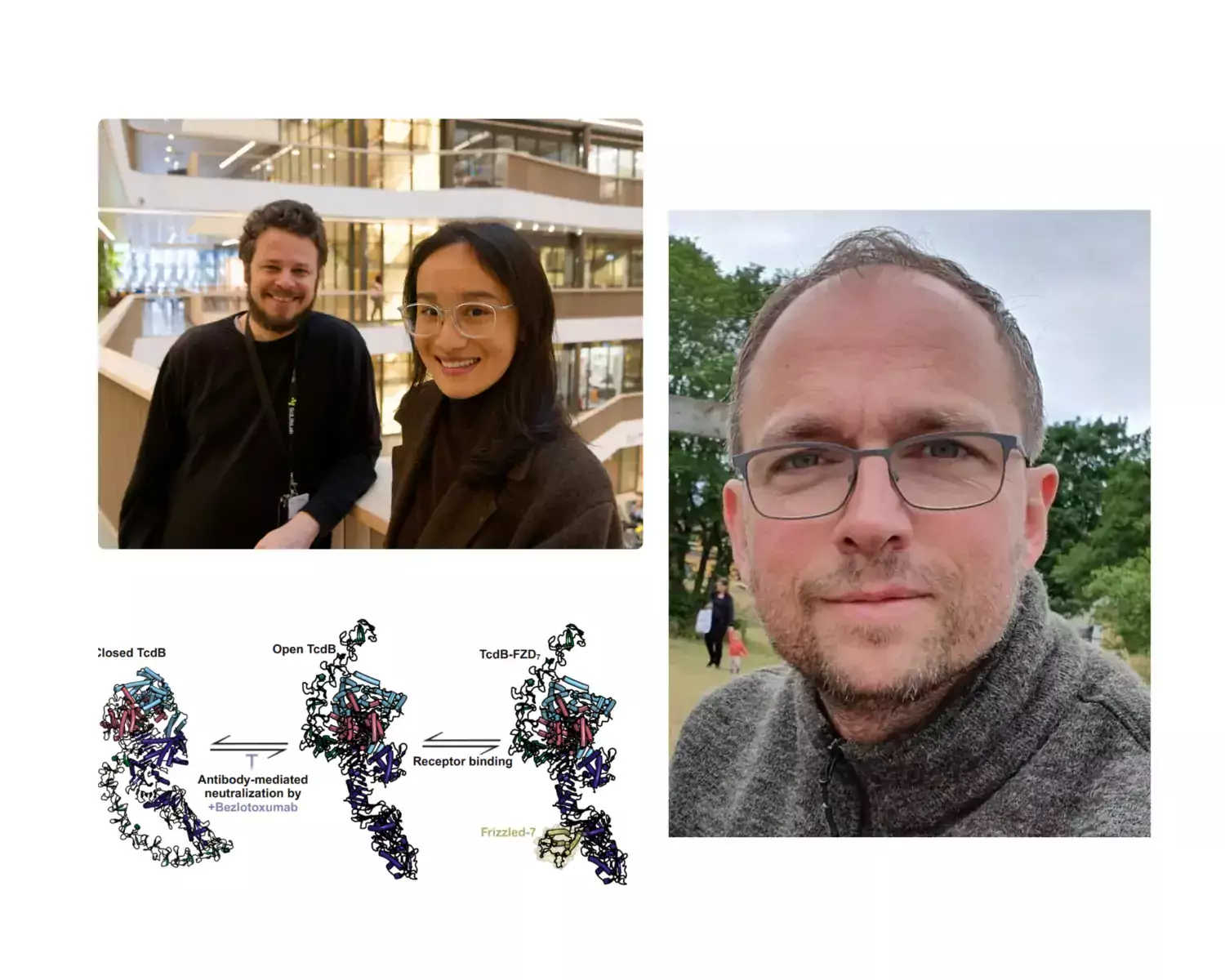Newly discovered dynamics in bacterial toxin made visible with electron microscopy

By chance, Gunnar and his research group discovered the area of their publication, the purpose was different, but the findings were far too exciting to end up in a drawer. The work introduces a methodology to quantify binding of a bacterial toxin to its receptor.
This method can be scaled up for so-called high throughput screening and enables screening for other substances that prevent complications in connection with bacterial infections. Gunnar Schulte and his research group were interested in understanding how Frizzleds (FZDs) can act as toxin receptors, part of a chain of events that causes the toxin's pathological effects on intestinal epithelial function. Using high-resolution cryogenic electron microscopy (CryoEM), the research group and collaborators at Stockholm University and Harvard Medical School have found that a dramatic shape change in the toxin is required for the toxin to be able to interact with its receptors and that bezlotoxumab, an FDA-approved antibody to treat antibiotics-associated and Clostridium-difficile induced diarrhea, stabilizes a conformation of the toxin that is closed for receptor binding. The work has shown how bezlotoxumab works on a molecular level.
"This work presents our first protein structure where we have done the entire work in-house. It is a breakthrough for my group, for Fyfa and maybe even for KI's CryoEM facility as it deals with membrane-bound proteins that are a bit special (more challenging) than soluble proteins."
The group has invested in the purification of membrane-bound receptors, in which Julia Kinsolving, a PhD student working with Gunnar Schulte, played an important part. In addition, the group has made huge investments, just over half a million SEK, in powerful computers that really came into use, a real proof of endurance for the infrastructure and the research group. The findings in the work and the development of a cell-based binding assay for the bacterial toxin TcdB open technical possibilities for screening for new substances that block the interaction between the bacterial toxin and the receptors of the intestinal epithelium in the context of future drug development.
"The most important thing is probably that we could prove to ourselves that we can solve protein structures with CryoEM, our premiere! Julien Bous, with his fantastic expertise from Montpellier, among others, was vital here. Julien has used machine learning and the latest analysis methods to uncover all the cool details and dynamics of the bacterial toxin protein. We have learned a lot in terms of structural analysis.”
What happens next will be exciting to see. For the group at KI, the publication was an excursion into microbiology that they will not continue further. The plan is to return to what they really wanted to achieve, namely obtaining better structural resolution of the receptor, FZD. The work with bacterial toxins may be continued by collaborators at Stockholm University (Prof Pål Stenmark) and at Harvard Medical School (Associate Professor Min Dong). Do you want to know more? Contact Gunnar Schulte or Julia Kinsolving.
More information
Full article title: "Structural and functional insight into the interaction of Clostridioides difficile toxin B and FZD7." by Julia Kinsolving, Julien Bous, Pawel Kozielewicz, Sara Košenina, Rawan Shekhani, Lukas Grätz, Geoffrey Masuyer, Yuankai Wang, Pål Stenmark, Min Dong, Gunnar Schulte
Collaboration with KI's CryoEM core facility (3D-EM under the direction of Martin Hällberg), The Science for Life Laboratory, Stockholm University and Harvard Medical School.
Funding: Karolinska Institutet (KID), VR, cancerfonden, novo nordisk fonden, Wenner Gren Foundations, Deutsche Forschungsgesellschaft
